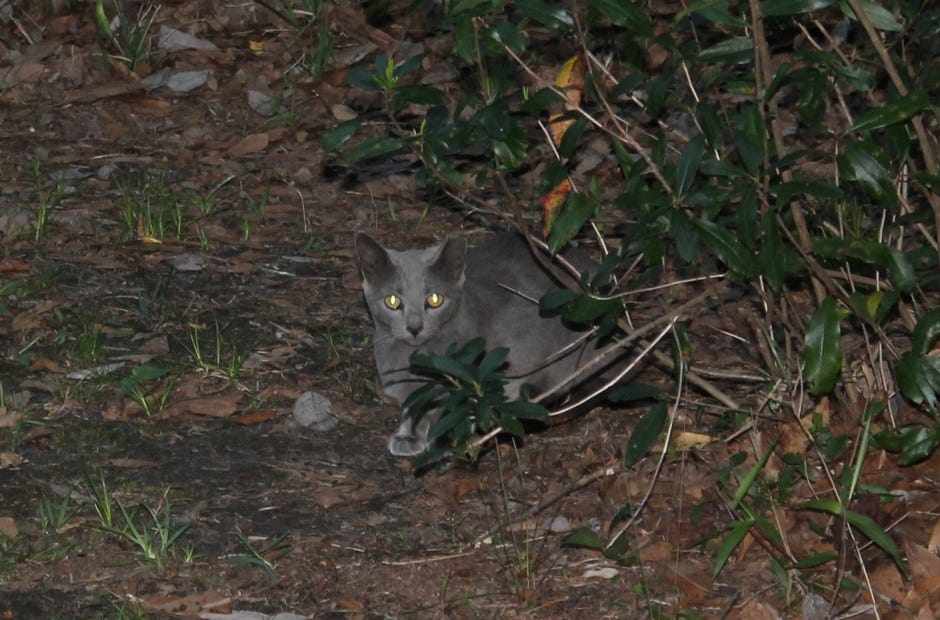![The tipped ear on this cat at Russell Harbor Landing means someone spayed or neutered it. While the procedure means the feline can no longer reproduce, experts also say it reduces the cat's aggression and other mating habits like roaming, yowling and spraying. [AARON LITTLE | Press Gazette]](http://127.0.0.1/wordpress/wp-content/uploads/2022/01/ghows-DA-4ac996f0-b994-6184-e053-0100007fd0dc-04a696a5.jpeg)
MILTON — The city’s feral cat population is rising, but what can the city do about it?
Experts say the answer is as simple as three little words.
FERAL CATS RAISE FEARS
In a recent letter to the Milton City Council, Marti Owens, Santa Rosa Veterinary Clinic’s co-owner and practice manager, said she discovered multiple, abandoned cats at Russell Harbor Landing.
Upon kayaking there, she wrote, she found 12 to 14 abandoned and feral cats and decided to feed and neuter them. She asked the city to place signs at the park notifying the public of a fine for abandoning animals.
“My fear is that someone else will dump intact cats (that is, those not spayed or neutered) at the park and that there will be an endless cycle of reproduction,” she wrote.
Theresa Messick shares the concern. She said she counted 24 feral cats from Canal Street to Willing Street to Berryhill Road.
Regardless of the cause, one thing is certain: “They’re multiplying like crazy,” she said.
Elyse and Fritz Patterson, East Milton residents, have helped feed the cats at Russell Harbor Landing. The Pattersons have rescued some cats and have neutered or spayed cats before and returned them. They would take in more cats, but now are at their limit, Fritz said.
The Pattersons would like to see a no-kill shelter in Santa Rosa County, like Alaqua Animal Refuge, a no-kill adoption center in Freeport.
‘IT’S NOT HUMANE’
Feral cats pose a serious challenge, to not only their well-being, but also that of other wildlife.
“Cats are predators. The bird population could go down when so many are around,” Santa Rosa County Animal Services Director Dale Hamilton said.
Cats will hunt and kill even if well fed, according to the Florida Fish and Wildlife Conservation Commission.
Feral cats can be a nuisance to people by sitting on cars or defecating in gardens, which also raises a health threat.
Children may try to pick up a feral cat, just as they would a house cat, and may receive a bite or scratch, according to Hamilton.
“That cat could have rabies. If we can't catch the cat to quarantine it for 10 days, the child would need rabies shots,” Hamilton said.
Living in the wild is dangerous to the cat, too.
“It’s not humane,” Hamilton said. "They get run over, attacked by dogs and coyotes, and get no treatment for that. When (somebody puts) food out, it attracts all kinds of wildlife to that. Raccoons, foxes — they all (potentially) carry rabies,” he said.
THE TNR SOLUTION
So, what is the leading method of controlling the cat population? It amounts to three words: trap-neuter-return, according to the American Humane Society.
This is when someone traps a feral cat, has it neutered and returns it to the original location.
Kristen Carter began volunteering with the Pensacola Humane Society two years ago and has since fostered 12 cats, with 10 of those adopted out to families. Four of them started as feral cats; two of these remain at the Humane Society but are eligible for adoption, she said.
Neutered and spayed cats are docile compared to “unfixed” animals; this demeanor is unappealing to younger and new cats, she said.
“When (you) fix males and females, they become lazy don't fight for territory,” Carter said. “The ones still intact will move on,” she said.
Past research seems to support that theory.
Scientists conducted a TNR study from 1991 to 2002 at the University of Central Florida on school grounds. By the end, the cat population decreased by 66 percent, from 68 to 23 felines, of which 22 were feral.
Scientists observed no kittens on site after 1995, but additional stray or abandoned cats continued coming to the area, according to the study.
THE ISSUE: A surge in abandoned cats has resulted in feline overpopulation.
LOCAL IMPACT: Feral cat presence negatively affects residents, wildlife and the cats themselves.





This article originally appeared on Santa Rosa Press Gazette: Experts suggest humane solution for Milton's feral cat problem
